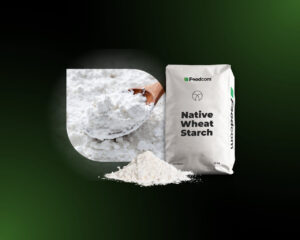- Starches and their derivatives are produced from wheat, maize, potatoes and tapioca. They are used in the food, pharmaceutical, chemical, paper and other industries.
- This year’s excessive rainfall has reduced the quantity and quality of the wheat crop in France.
- The challenge for starch producers will be undersized grains, the processing of which may involve extra work, damage to machinery, the need for new solutions and higher production costs.
- The starch industry is also struggling with low demand and high imports.
Lower wheat harvest and yields with smaller grains in France
Heavy rainfall in France has significantly affected the wheat harvest , causing a sudden deterioration in quality. The soft wheat harvest is expected to be the lowest in 40 years. The grains show a low level of quality, in particular low and inhomogeneous specific weights as a measure of grain size. This poses a challenge for starch producers – small grains contain less starch, so more by-products will be formed during grain processing. Excess cellulose, meanwhile, can damage machinery. Processing this year’s grains will therefore involve more costs and challenges for starch producers in terms of extra labour, machine breakdowns and the need for new industry-level solutions.
How is the starch industry doing in France?
Four starch companies in France – Tereos, Roquette, Cargill and Archer Daniels Midland – have decided to reduce the quality requirements for wheat grains. However, their processing will be a challenge leading to increased starch production costs. The industry is suffering anyway from low demand and increasing competition from starch exporting countries to France. Already last year, demand fell so much that some starch producers in Europe were forced to reduce production and shut down some factories. Imports have also already increased last year, by 13%. The turnover of the French starch industry last year increased by 17% due to higher prices, but the amount of starch produced fell significantly – by 12% in the food sector and by 18% in the pharmaceutical, chemical, paper and other industries. Results for the current year are still uncertain due to rising production costs, with demand beginning to increase.
![Challenge for starch producers after weaker wheat harvest in France [World News] Challenge for starch producers after weaker wheat harvest in France [World News]](https://foodcom.pl/wp-content/uploads/2023/09/Foodcom_World_News_Food-1520x760.jpg)






